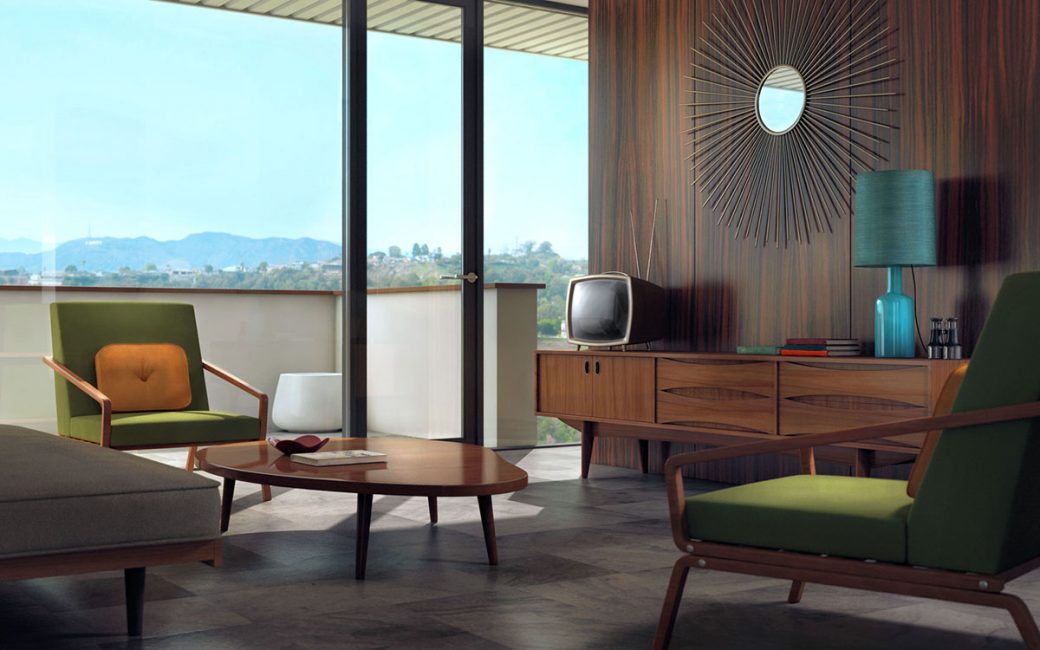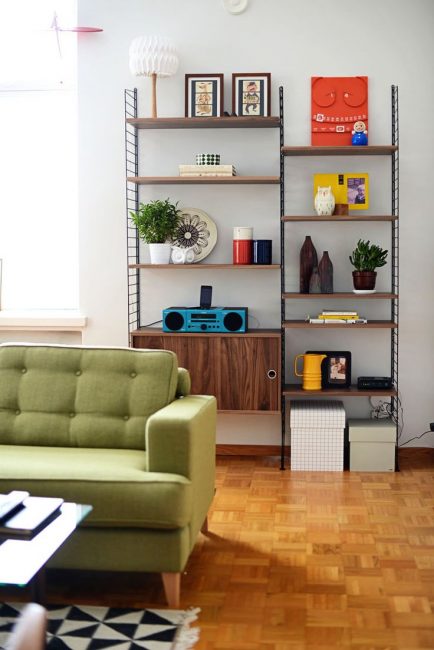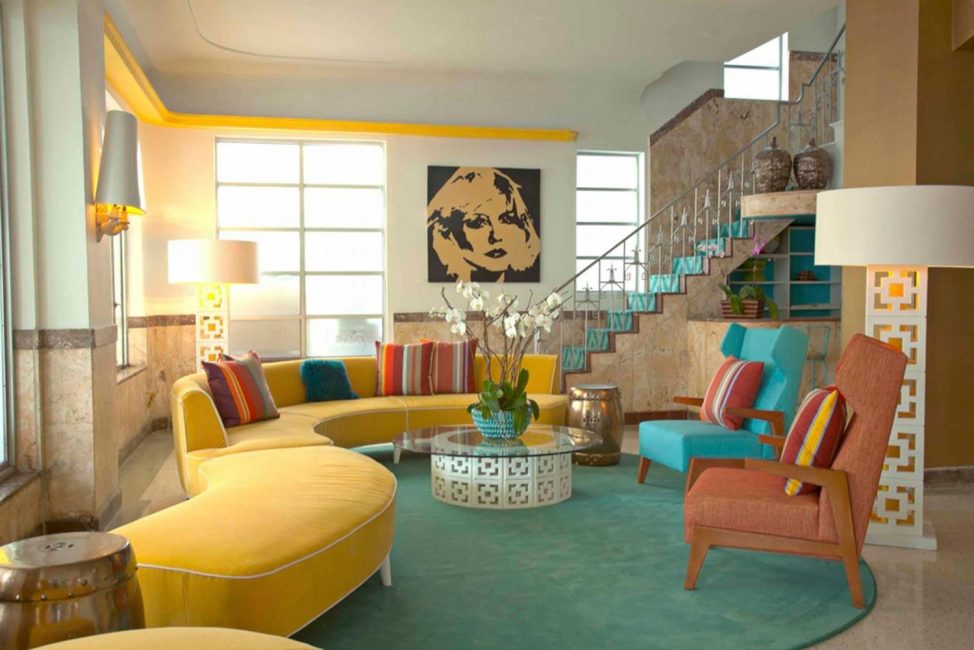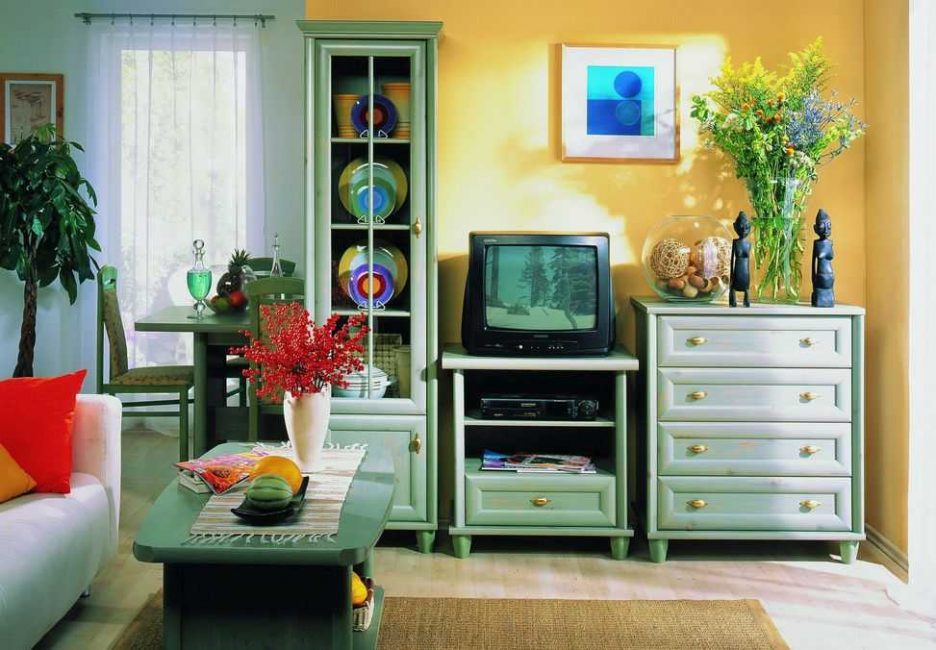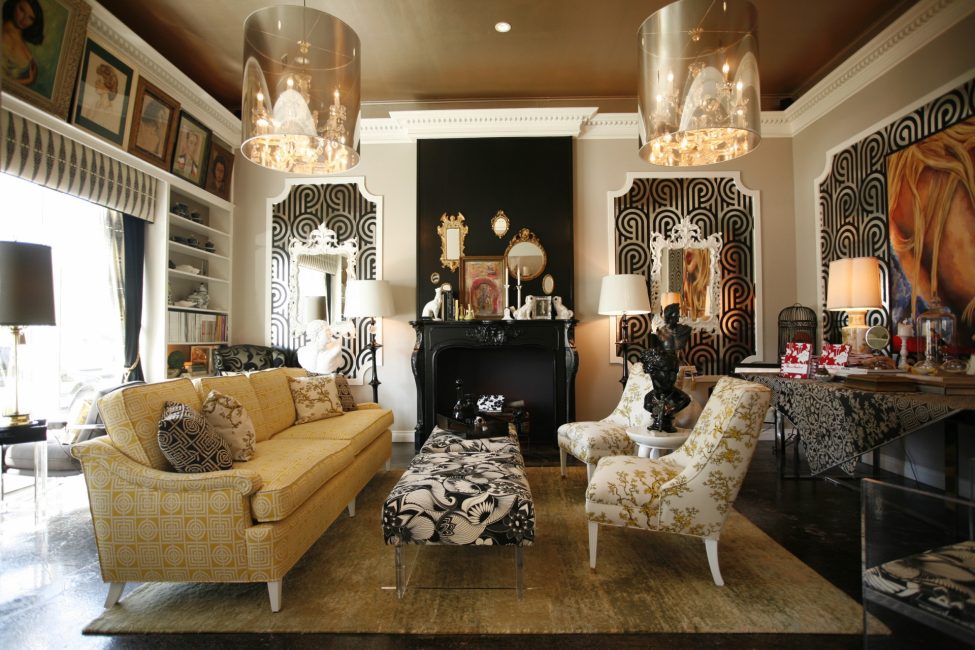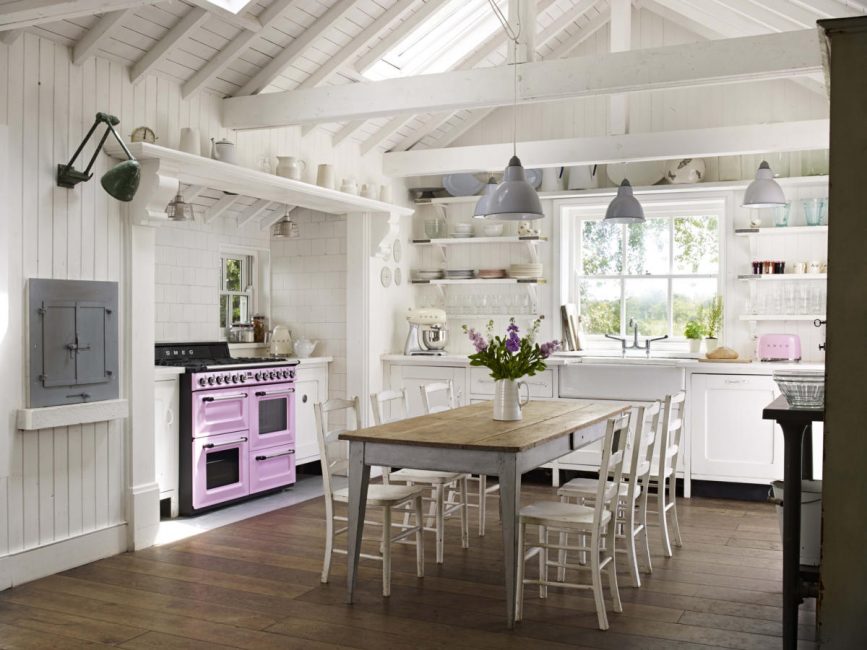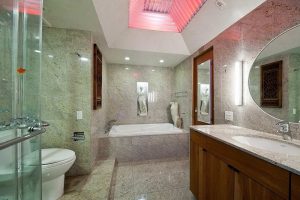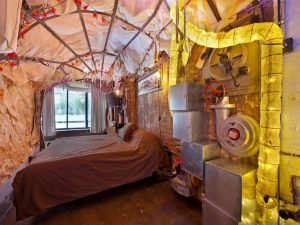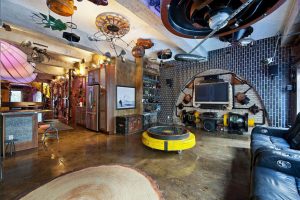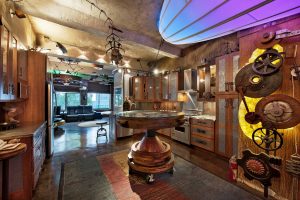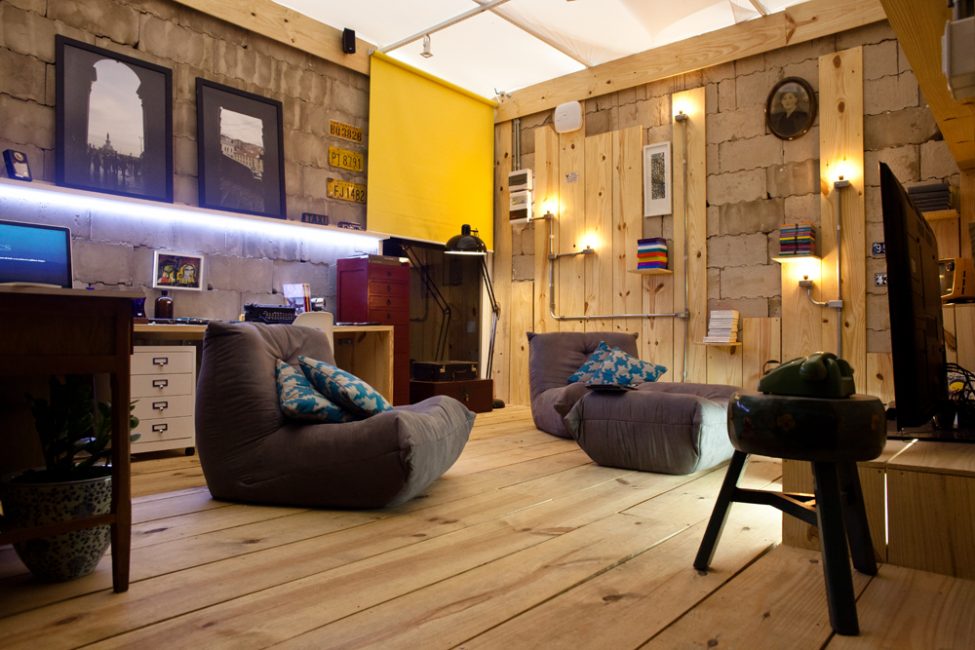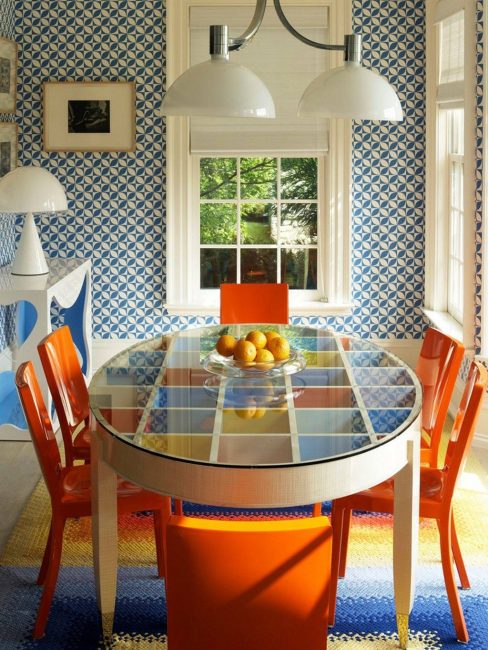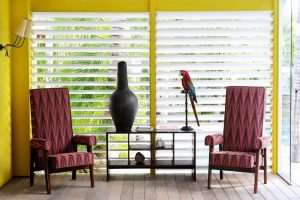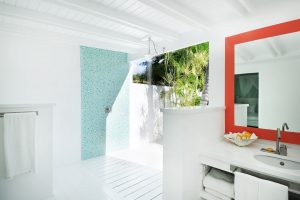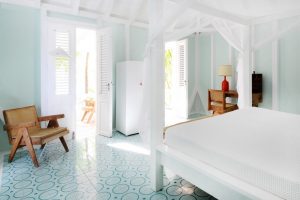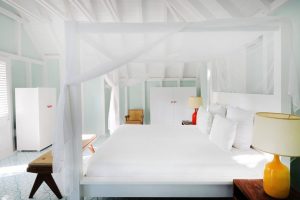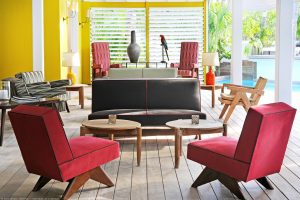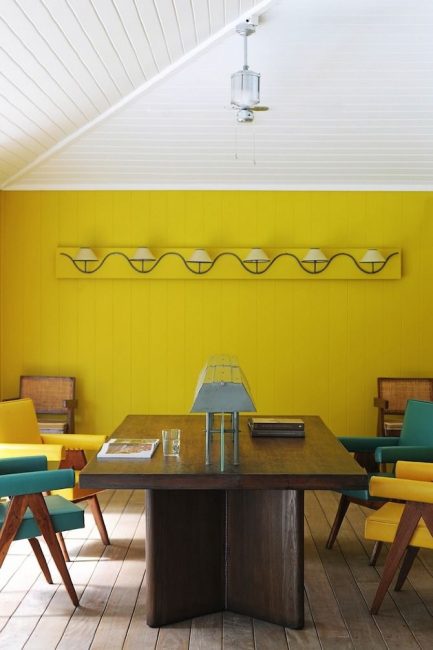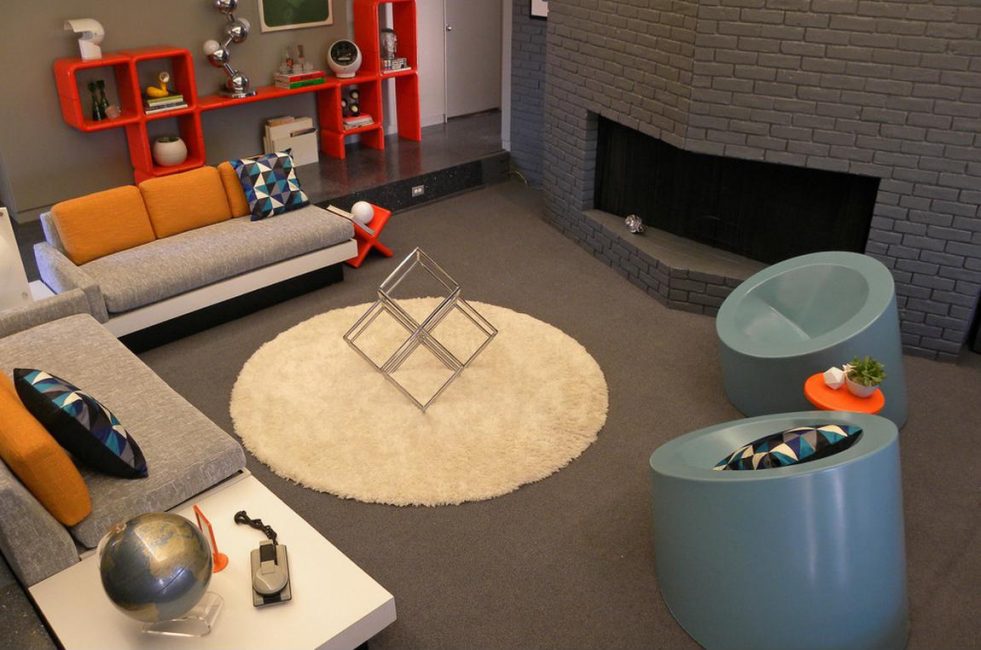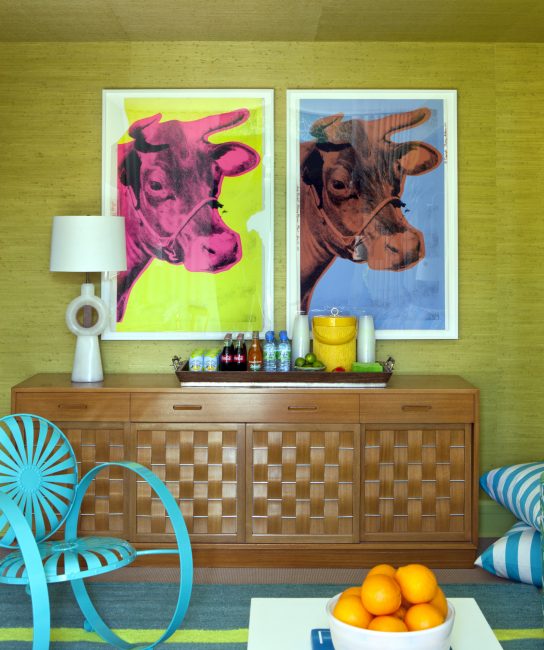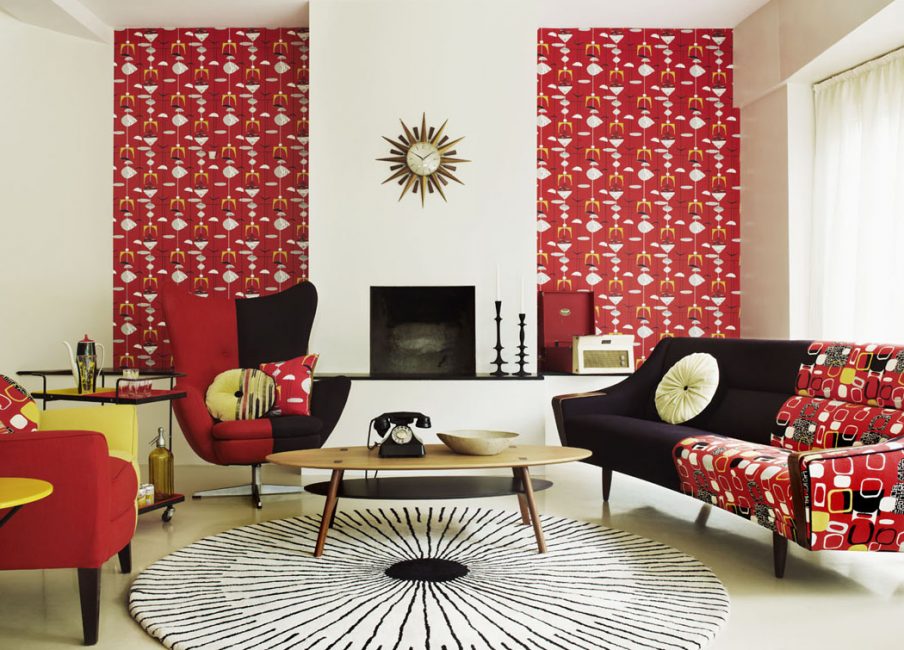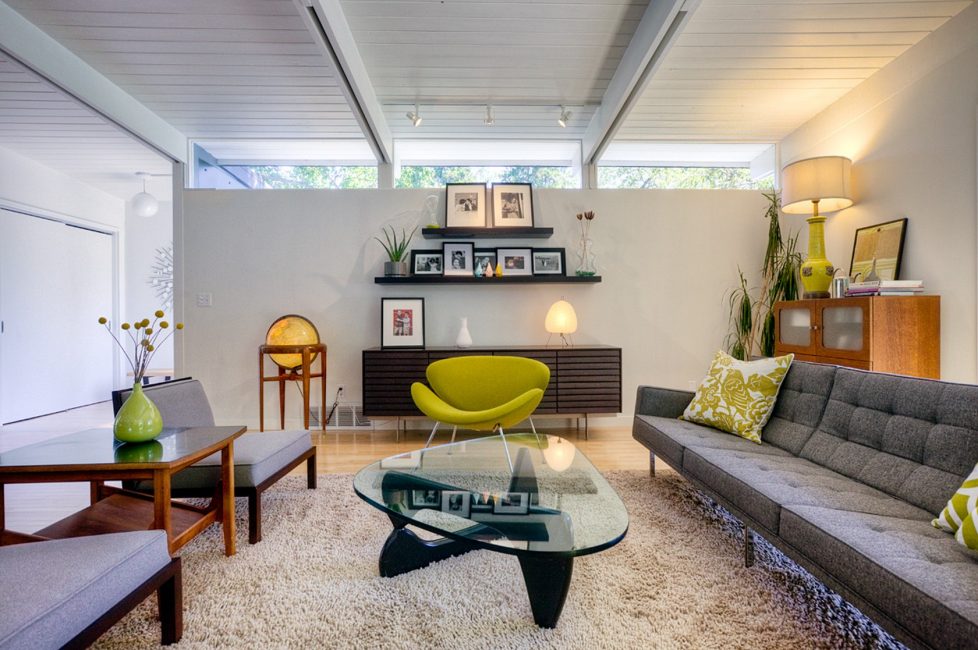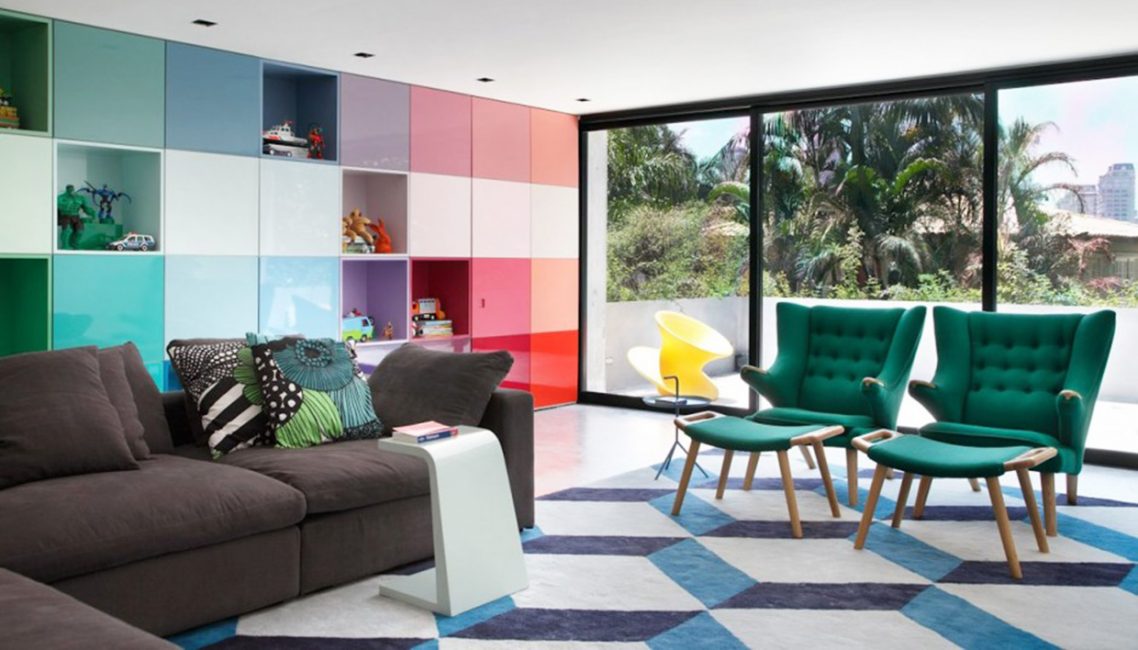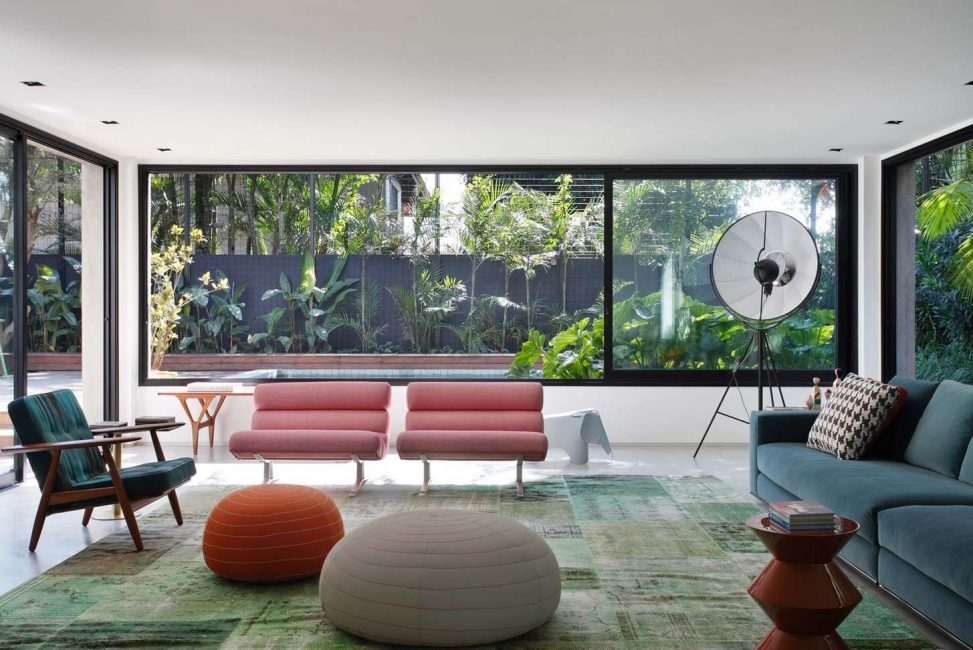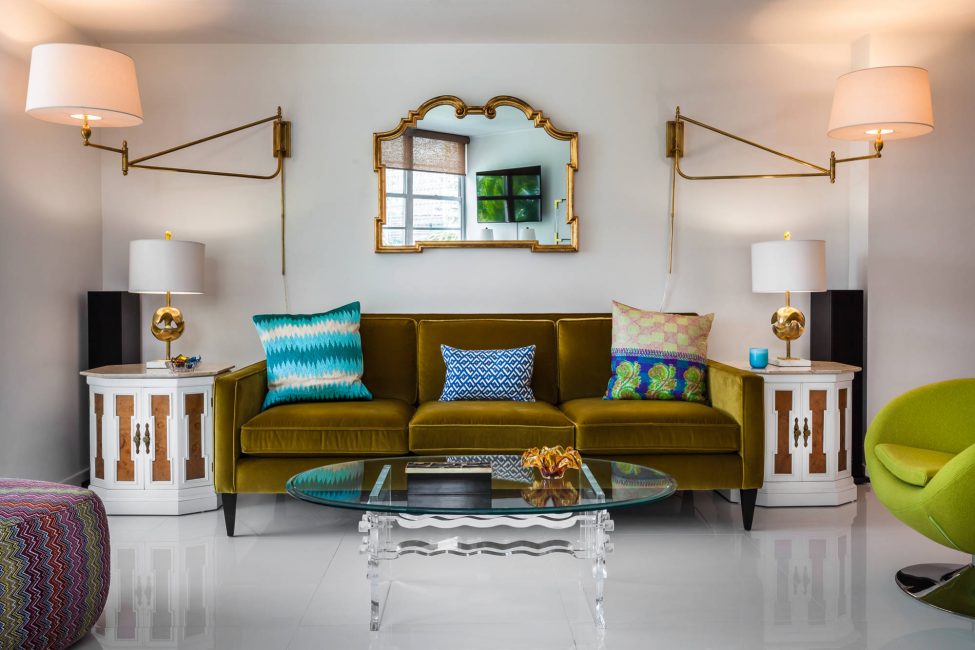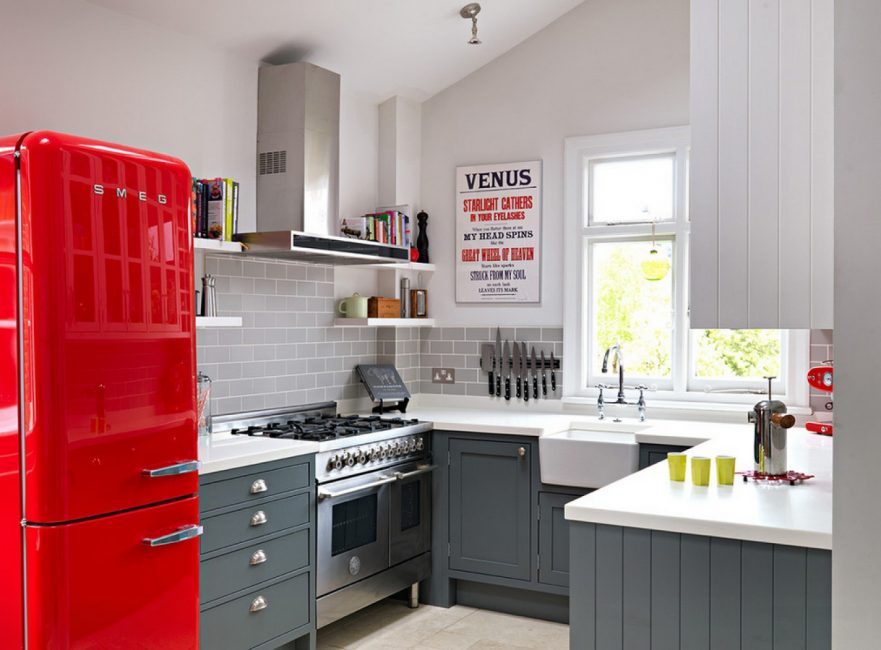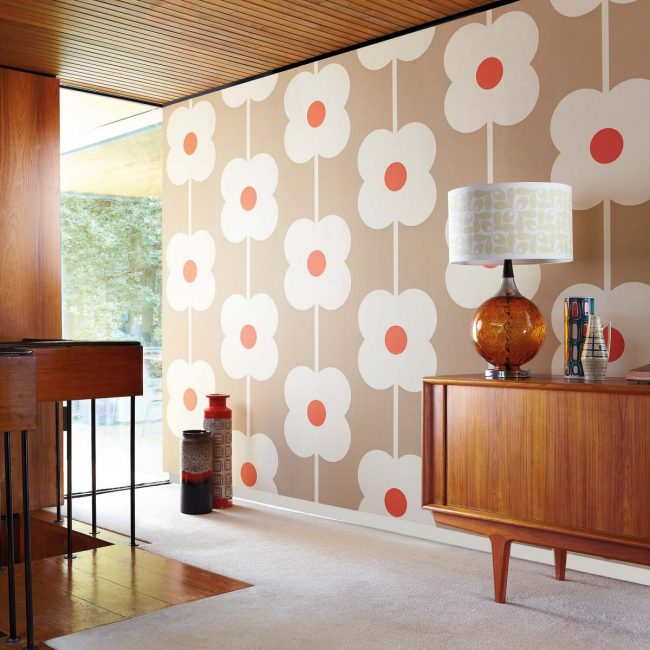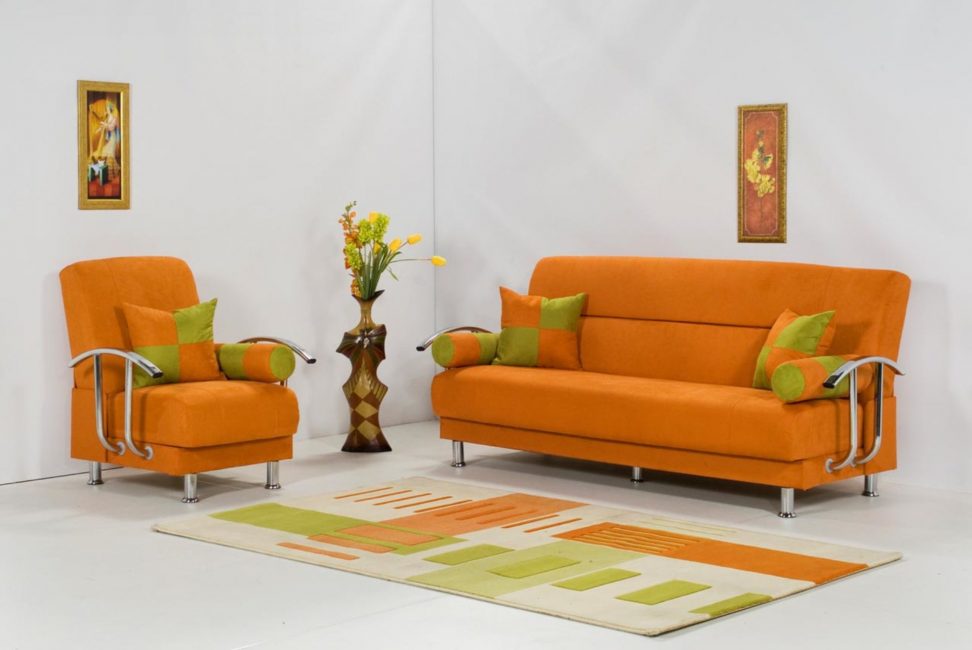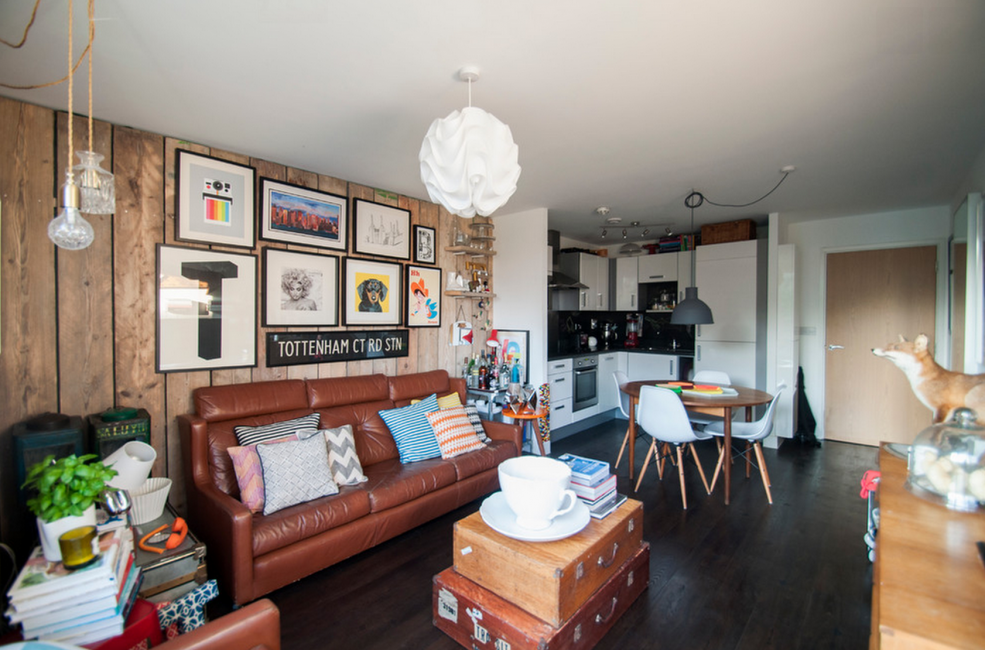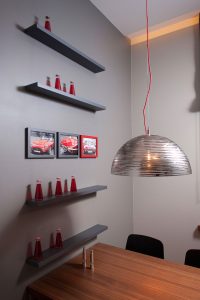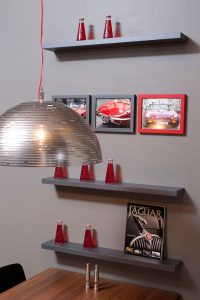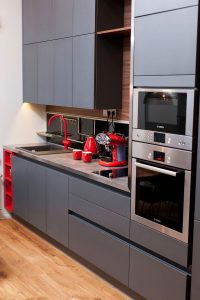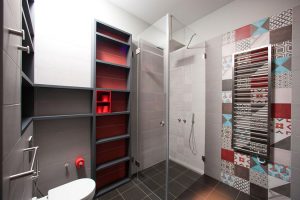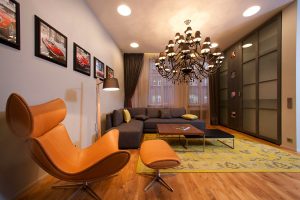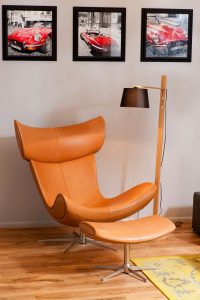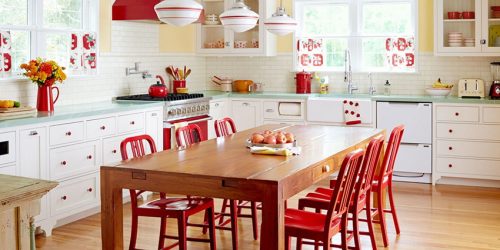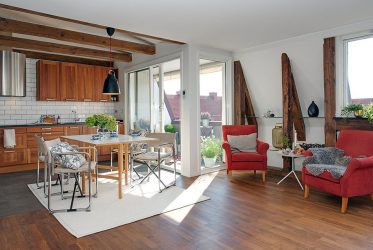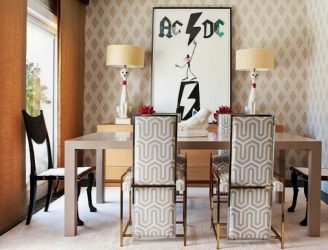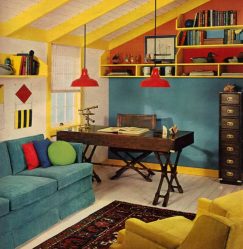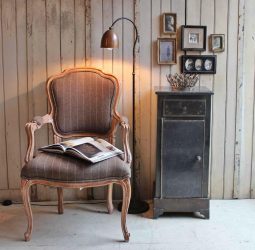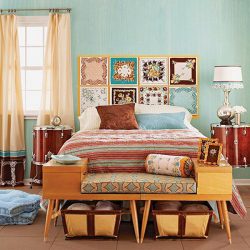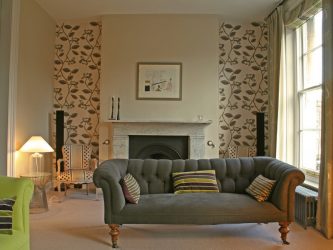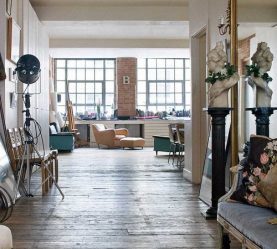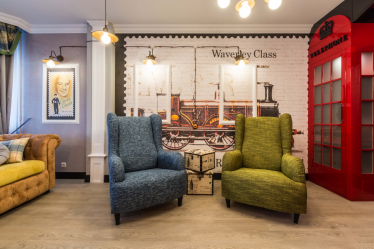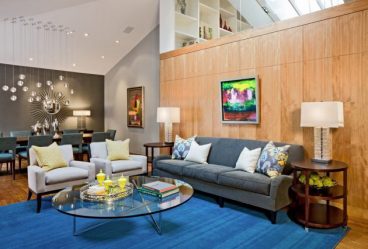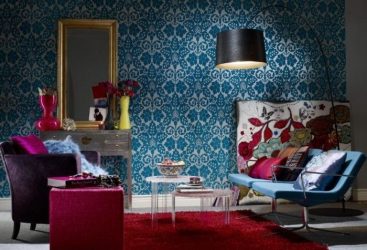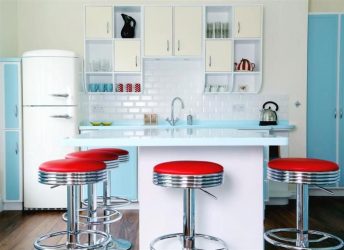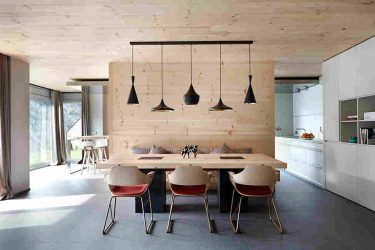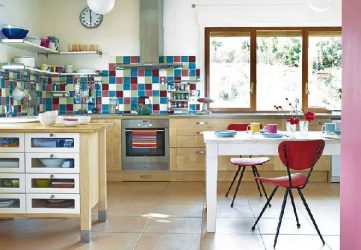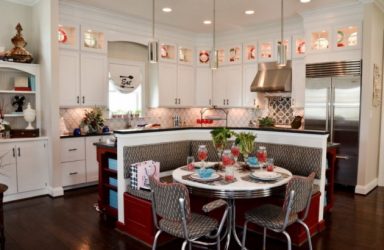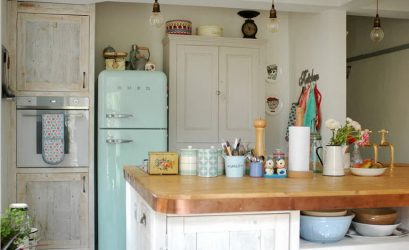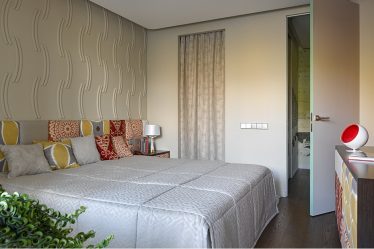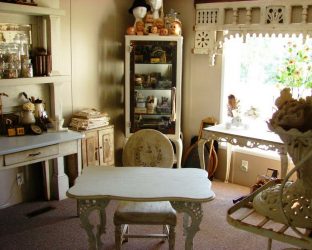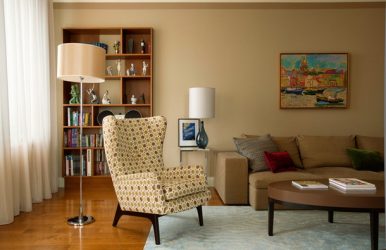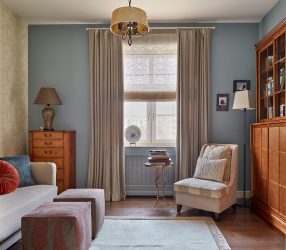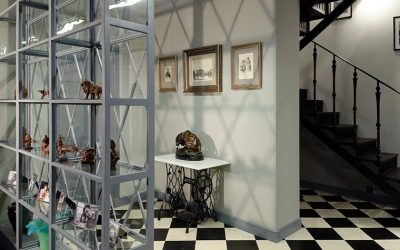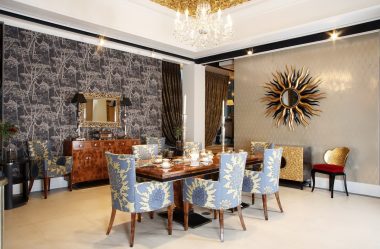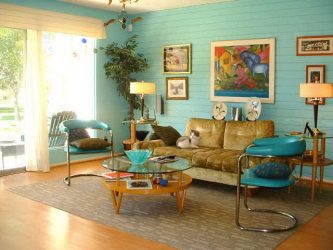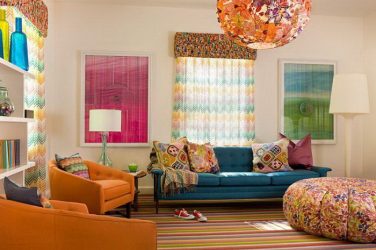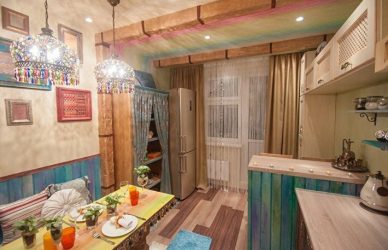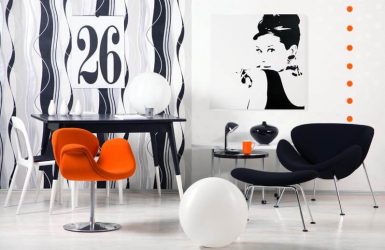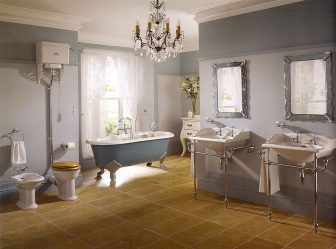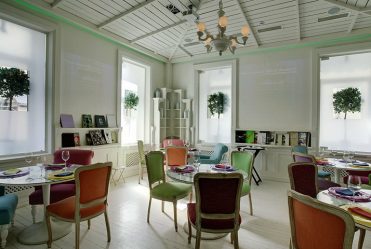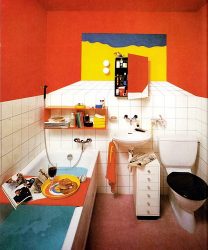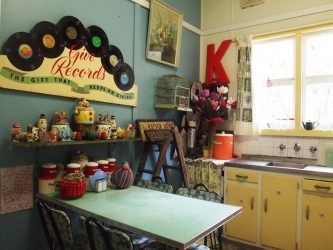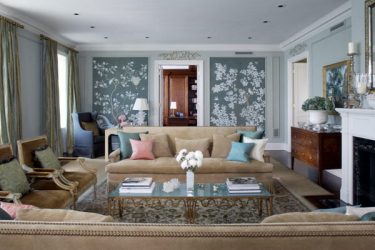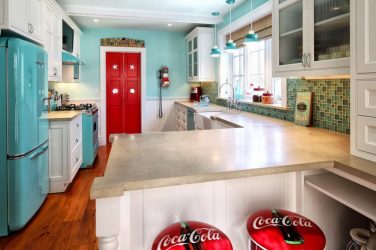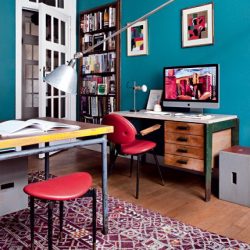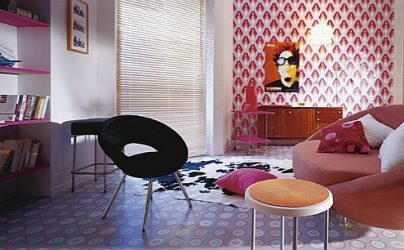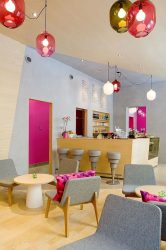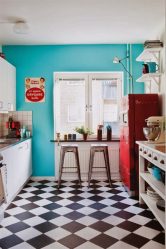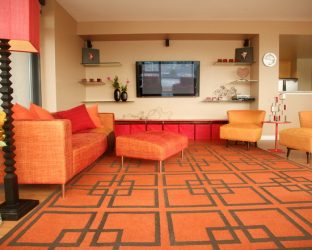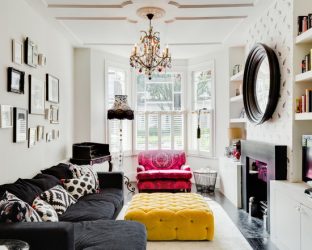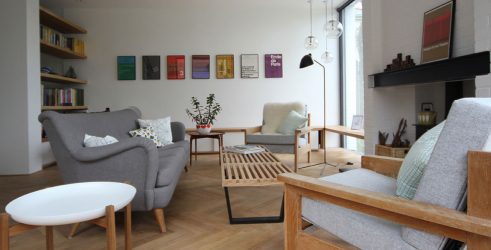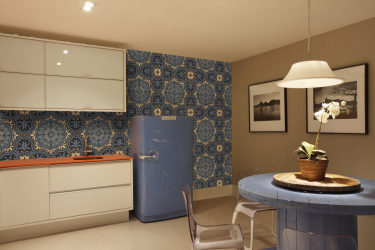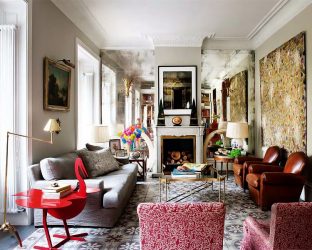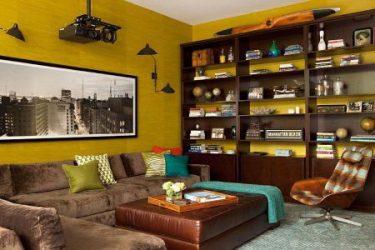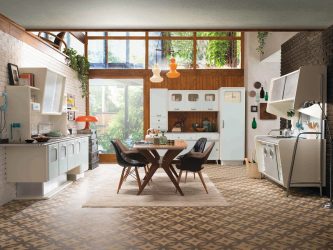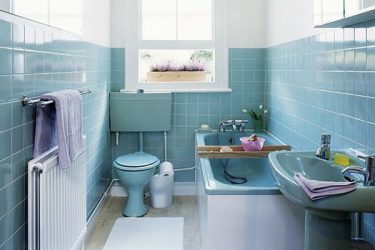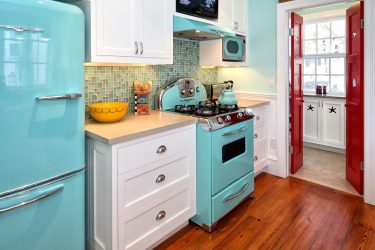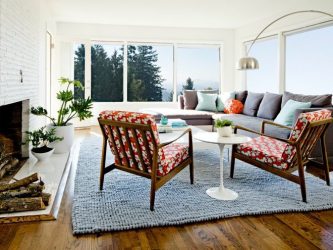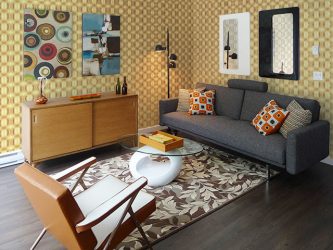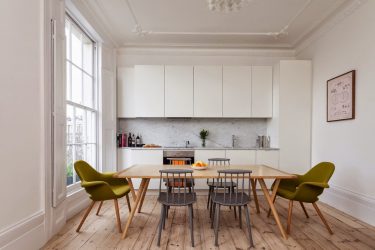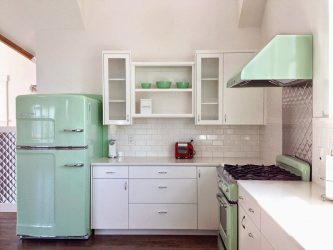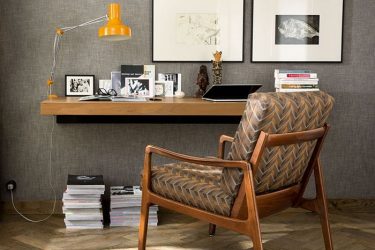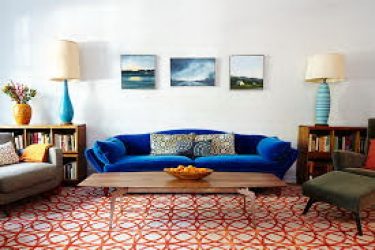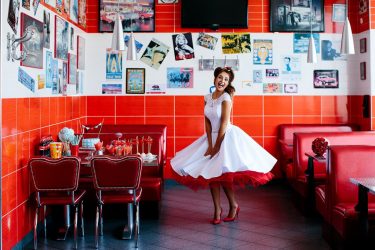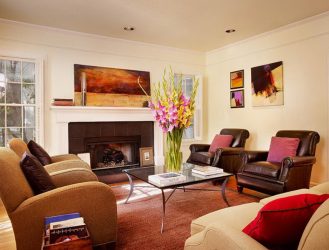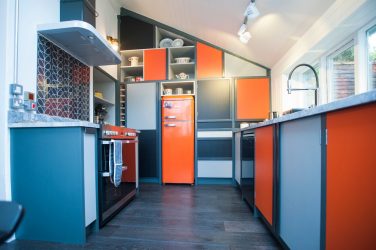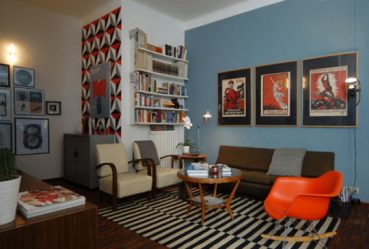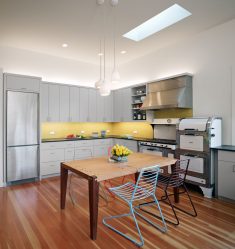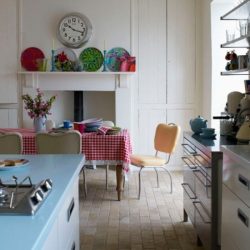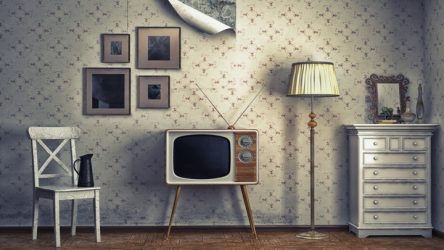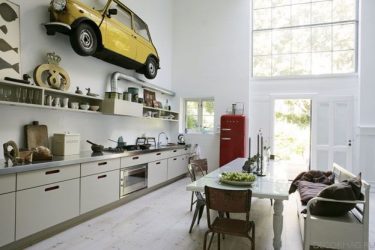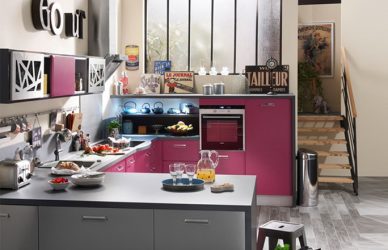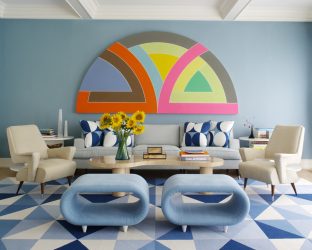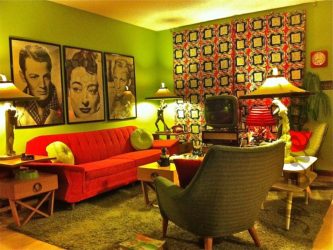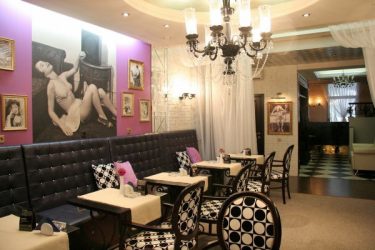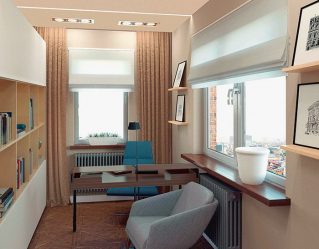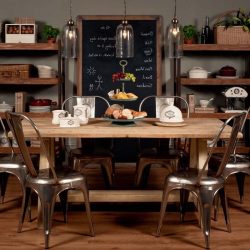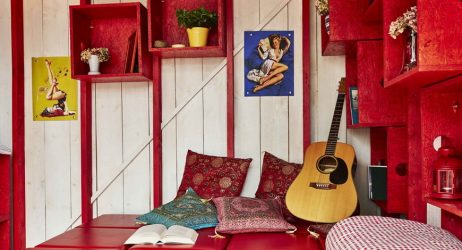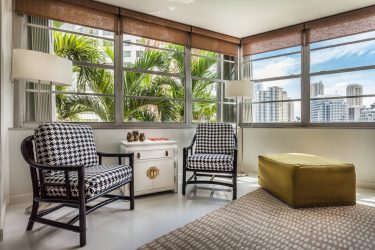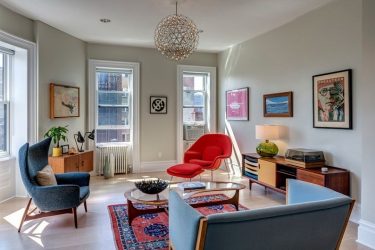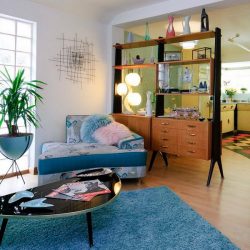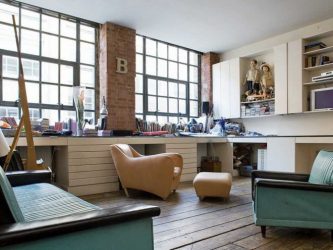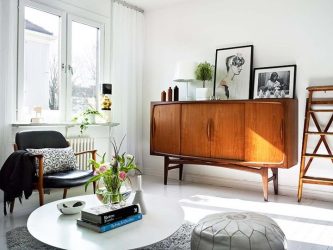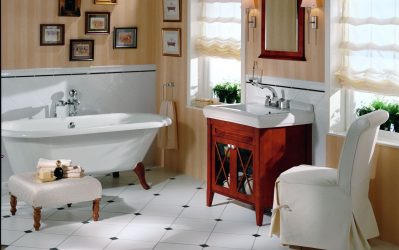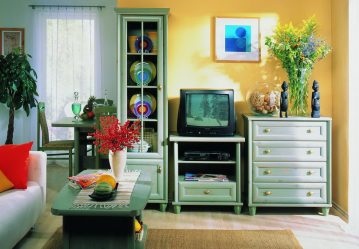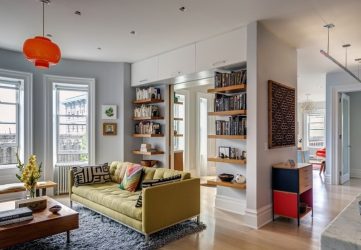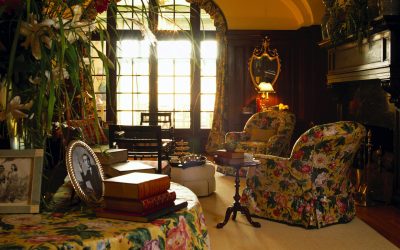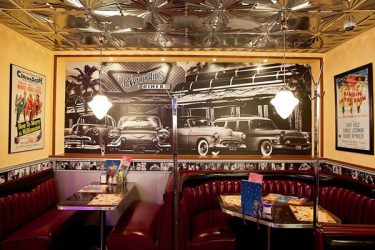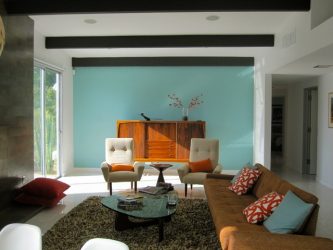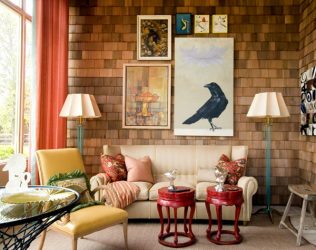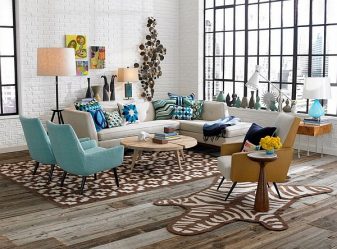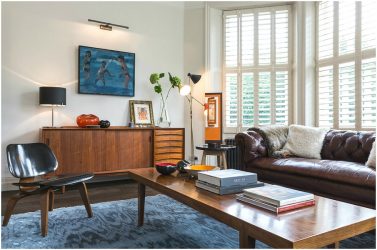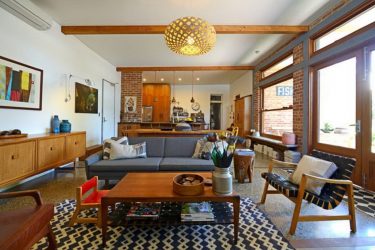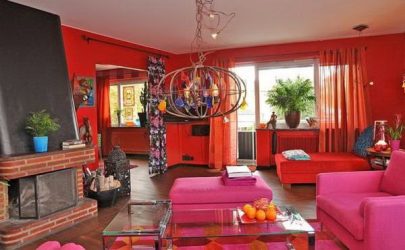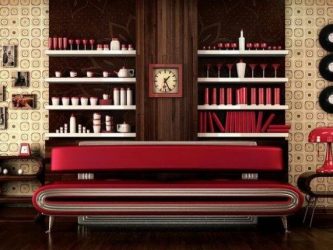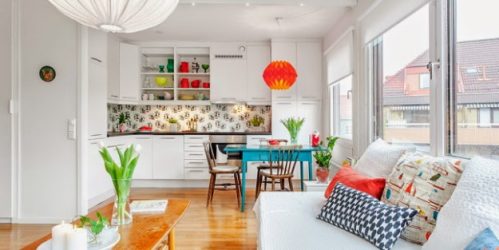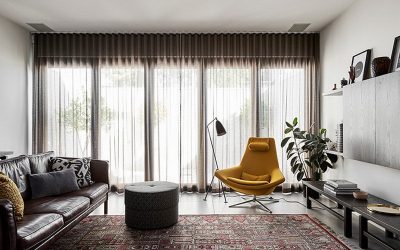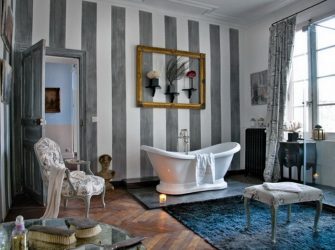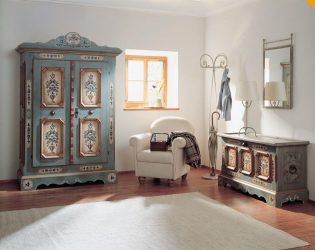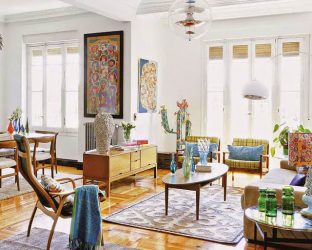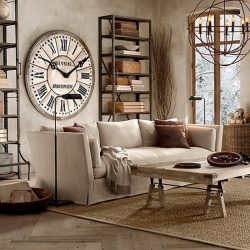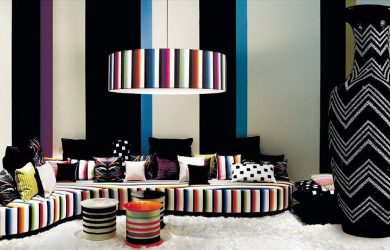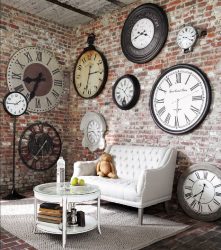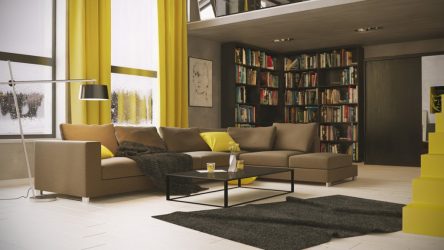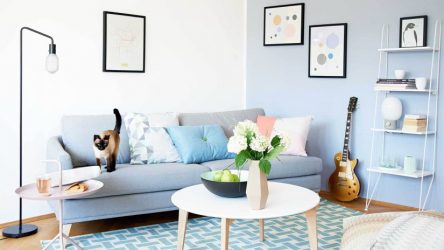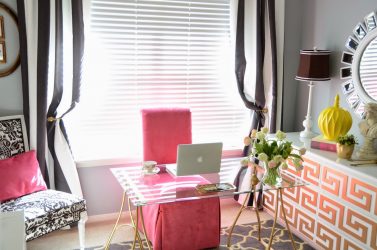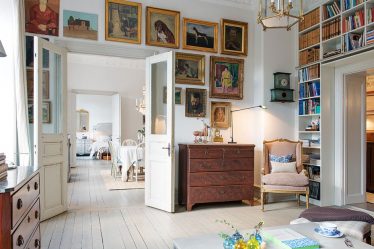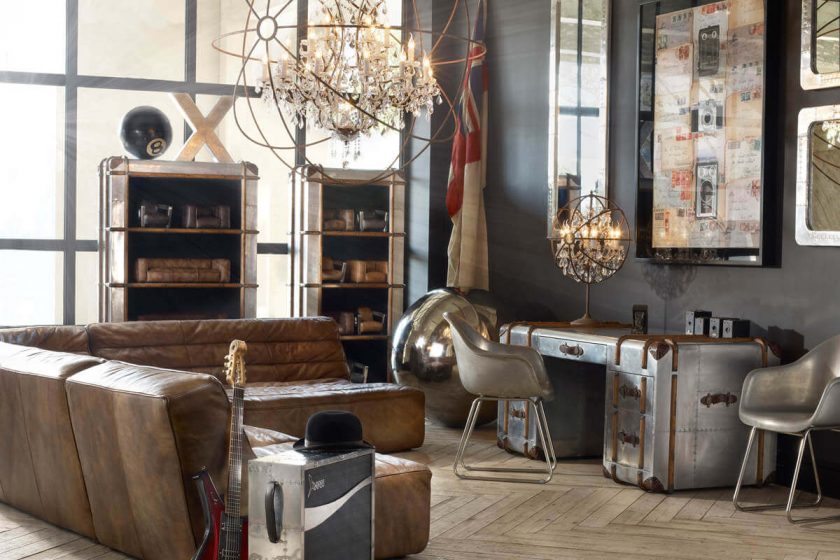
Whether you want to ponastalize, or seriously get carried away with the theme of retro - learn about this violent era, which shaped the interior under the way of life. Let's create a retro interior according to the rules, despite the fact that the style is quite complex and multi-layered.
Content of this article:
What is retro style?
I don’t know about you, but when I mention the retro style, I immediately recall the films of Kusturica, with these shiny jackets, beads, curtains, and a crazy way of life, which is ridiculous. Retro style in interior design is brightness, cheerful mood and originality. The most noticeable design ideas of the mid-XX's are reflected precisely in the interiors decorated in retro style.
In many industries, including music, fashion and design, the word "retro" is used to describe the imitation of old trends and styles. In the world of interior design, “retro” usually refers to furniture that has been typical for decades between the 1950s and 1980s.
Parts of it can be vintage and originally released in this era, or simply take inspiration from the shapes and colors that characterized the style of the time.The ultimate hallmark of retro style is an eclectic blend of old and new: the classic design alternates with new works combined to create a single, holistic look.
In today's standards of design, “retro” is a style that confidently combines an authentic look with the best modern technologies, while remaining worthy of nostalgia.
It will be interesting to you:REVIEW: Simple and many-sided Country style in the interior of a country house. 200+ Photos of natural design and simplicity
return to menu ↑The history of the retro style
Retro style has become widespread in Germany, England, North America since 1950. But the concept has been quite popular for many years. Nowadays, it is also popular and is being reinvented by many designers. Used this style as inspiration, in particular, companies such as Walter Knol, Rolf Benz.
However, it is difficult to determine where the lines between Vintage, Mid-Century Modern and Retro overlap. All three styles are completely separated according to their methods, but they have one thing in common: a love for the design ideas of the past. The statement that your retro design will be too vague, but it works in that it combines any number of suitable design styles.
Characteristic features of retro-style in interior design of apartments and other premises:
- Focusing on fashion trends 50-70-ies of the XX century.
- The use of synthetic materials (plastic, synthetic fabrics, PVC, etc.).
- Bright colours.
- Vintage decorative elements (decorative vinyl records, old-fashioned textiles, lamps, vases of the last century);
- Furniture unusual shape;
- The trend towards stylization, abstract forms.
Retro style in interior design is fancy shapes, color combinations, textures. It is determined by brightness, originality: plastic figures with vinyl records, paintings with photographs of cities, lava lamps with sofa lips, a combination of glass, plastic, metal with synthetics (primarily artificial leather, velvet), embroidered with beads curtains and asymmetric patterns.
return to menu ↑Distinctive features
Retro is the style of the merry 50s, bright 60-70s. This is a mixture of hipster fashion with their beautiful clothes and charm, colorful hippie dresses with a floral theme and a rainbow print, with a bright explosive disco with acid colors and a variety of shapes.
The 1950s introduced chrome handles on cabinets, legs of tables and chairs. Upholstery on chairs made of artificial shiny leather, color combinations:
In the 60s, the hippie movement (flowers, symbols of peace, rainbow) was relevant. Slightly more restrained colors and geometric patterns (along with floral motifs) were at the peak of popularity at the time.
The 70s - the disco era: the previous shades were expanded in gold, blue, brightgreen. Glitter, brightness, fun - this is how you can describe the mood of that period. There were big ones in fashion sofas, bar chairs, cabinets, sideboards, journal tablesottomans.
It will be interesting to you:REVIEW: Minimalism Style in Interior (185+ Photos) - Art of Space. Get rid of cramped and constrained
return to menu ↑Where is the retro style?
This style is popular in large cities, it is widely used for decoration apartments, cafes, hotels, cinemas. The interior design of the restaurant in a retro style or the interior design of a cafe implies brightness, original features, stylish bar stools, tables, a smooth shiny surface of the cabinets, bar counters.
Interior design of the apartment in retro style is comfort, showy charm, cheerful mood. Unusually shaped furniture, beaded curtains, old-fashioned figurines, posters with the heroes of past years, bright colors - all this creates a special retro-style mood: bright and warm.
Modern interior design in this style is seen by designers as follows:
- Rich colors, bold color combinations.
- The skillful combination of materials (PVC, synthetic, plastic) creates an atmosphere of lightness and fun.
- Pronounced individuality of the interior from the use of unusual furniture and decor.
Bold, unexpected design solutions: multicolored chandelierscolorful curtains, bright furniture, surprisingly comfortable blending of glossy lacquer surfaces and leather upholstery. A variety of colors, individual photos in retro style.
return to menu ↑Interior Style: Overview and Examples
Retro style creates a special attitude: impetuous, cheerful, bright, unique. This is a memorable chic, joyful atmosphere, an unusual combination of antiques and artificial materials.
The most common prints:
- flower theme;
- "Oriental cucumber";
- geometry;
- abstraction;
Actual shades:
More restrained colors - olive, cream, mustard.
Accessories:
- vintage mirror frames;
- desk sets;
- crystal vases, decanters;
- plates;
- drawings or photographs in wooden frames;
- car models that were popular in those years;
- plastic figures.
For lighting are used:
- floor lamps;
- chandeliers with lace;
- lamps with lampshades;
- decorated with fringe.
Retro-style is popular due to the bright mood that permeates every interior in this style. The refusal of standard solutions and boring design options makes this style popular among those who appreciate individuality, brightness, dynamics. It is also a choice for those who are young at heart, those who seek to create an atmosphere of chic with elements of modern trends - at home or in the workplace.
Retro style in the interior is a bright call, an up-to-date, fresh and original look at familiar things.
It will be interesting to you:REVIEW: Loft Interior Loft Interior Apartment: 215+ Design Photos of Unlimited Space for Self-Expression
return to menu ↑Retro furniture features
The style of retro furniture originates in the traditional Bauhaus style. It arose due to the need of the market for high-quality, comfortable, but inexpensive furniture.
With the new milling technique in the 60s-70s, furniture with perforated holes or even holes appeared as a decorative design element on metal facades. More and more the chair was reduced to its immediate function. The backs are shorter - in most cases they did not exceed the length of the shoulders. Soft armrests were removed, so that the furniture with filigree legs, despite the comfortable upholstery, got a very light overall look.
return to menu ↑Main furniture characteristics
The retro furniture of the 1950s-1970s was originally in the form of relatively crisp, simple designs from a base. Depending on the piece of furniture, it was either made with new coating methods (for example, with longitudinal or transverse seams on the back), or the materials were mixed, so the cabinet could contain metal legs with a wooden frame, often with drawers or a facade of various colors.
Wardrobes were muted, for example, dirty yellow, sea green, beige, brown, but also in the 1950s and 1960s muted orange appeared. Popular types of wood were red-tinted shades, such as cherry, walnut, oak, beech.
On floors were a clear geometric structure. The black and white checkerboard pattern was a trend, and linoleum was used as a new uncomplicated coating in many shades and patterns. The wallpaper was rather restrained in the fifties. Often it was heavy fabric wall coverings with small floral patterns, sometimes with a thin silk shimmer. Also typical for the 50s were motley almost simple wallpaper, as well as furniture in muted colors.
Also new were metal handles (spherical, cuboid, tapered) in contrasting colors for the rest (often gold brass with black). They corresponded mainly to higher furniture legs made of wood or a combination of woody metal.
return to menu ↑Decor ideas
The retro interior can be integrated as separate fragments or as a complete retro makeup for a particular room, such as living room or kitchen. You can decide to redesign the whole houseTo reflect the nostalgia of this period - it all depends on the degree of your commitment.
It is not for the faint of heart or people who prefer a more restrained classic decor.Pure retro will look like you haven't updated your décor in recent decades. True vintage decorations are in great demand, so if you have several lamp shades in the basement or attic, it's time to clean and integrate them into the new project.
return to menu ↑The idea of decorating by periods
Not all retro projects are created equal, each period has a different attitude. Learn to distinguish between different periods in retro interiors, which can range from purely modern to psychedelic.
Modern mid-century: 1920s - 1960s
The movement originated in the 1920s as a reaction to the art deco style and lasted for decades. The transition from “vintage” to “mid-century” may have been a little slower than later design changes, but it was a clear transition from clean, ultra-strict decor to something a bit more comfortable. After the end of World War II, the design industry moved from the starting point where it stopped in the 40s, with the result that the 50s became an expression of their own design style, which brought the interior style to a whole new level.
Key points:
- Smooth and minimalistic: It has smooth shapes with minimal details.
- Known to this day designers: The famous designers were Eames (Charles and Ray), Mies van der Rohe and Iero Saarinen, who were also architects.
- Retro chairs: Classic items such as the Barcelona chair or the Womb chair are necessary for serious retro collections.
Geometric shapes, ornaments with straight lines, soft curves, asymmetrical motifs look beautiful with metallic accents, glass, concrete, wood in the rooms, designed in the style of mid-century. Old switches and door handles, lamps and retro wall clocks help add nostalgia to modern homes.
Here are some ideas:
The style of the 50s brings the past into the present, and the designers add a modern or futuristic style to the houses. This increases the effect of creating unique, functional, modern interiors. Be inspired by this wonderful photo collection of the style of the mid-century, take your favorite ideas to your home.
1950s Kitchen Design
Color schemes: Popular color schemes include a black and white checkered floor from tiles, with a bold accent, such as cherry red, turquoise, hot pink.
Typical materials: The predominant materials for furniture and other finishes were light wood, chrome, vinyl, countertops Formica, plexiglass (organic glass).
Diner Style: since this period is well reproduced in kitchen design, consider adding banquet chairs to the kitchen or a couple of bar stools from the 50s snack bar to your the table for breakfast.
Rebellious 1960s
Progress in technology has led to home improvements, which radically changed the course of interior design, taking a new round in the late 60s. A new range of colorful appliances helped create a solid foundation for home design.
This new palette offered an exciting tempo change for the home. Not only did the color schemes evolve, there were also patterns. Widespread flowers, dynamic prints. These exciting projects were a sign of the times when the world was going fast.
Popular colors: decor with green avocado, copper, orange or mustard yellow with beige.
WallpaperA: Wallpapers have become very popular during this period, especially flock wallpapers. Today, there are many reproductions of the 1960s, such as Paisley or floral.
Characteristic furniture: Pay attention to molded plastic, rectangular chairs, as well as streamlined wooden Danish furniture, including tables, coffee tables, cabinets.
Other accessories: Finish your look with Andy Warhol-inspired pop art, as well as long-haired carpet. If you really want to reproduce the 60s retro, you'll need a lava lamp with an oversized binbeg chair.
The rhythmic 1970s
The décor of the 1970s has much in common with the 60s, as the period of the formation of something new. Only a few decades ago, the design was the same for everyone, and now the “70s” offered an individual style for everyone. Now there were no standard projects. Bright colors, wild patterns grew to enormous popularity, filling the house with new vital energy.
The design of the 70s is often referred to as “psychedelic”, this is correct, since bright colors, wild patterns for it are made like in a kaleidoscope. The house was filled with various textures - from a long nap on a carpet to lucista chairs, from velvet to chrome.
Brighter colors: 1970s wallpapers were made of shiny foil, bamboo patterns, grass.
Catchy carpets: the length of the pile of carpets has increased, and the patterns on it have become more bold.
Kitchen colors: Autumn shades such as orange, rust, brown, wheat were in great demand. Ensuring that your kitchen appliances are suitable turned out to be mandatory.
Material Changes: Popular surface finishes included wooden wall panels, heavy draping with a padded border, stained dark wood, rattan furniture, wickerwork, paisley prints for almost everything.
When the 70s came to an end, psychedelic interiors began to turn towards the new "funky" projects of the 80s. Less insane, these interiors have become more cohesive. Projects have become more organic, not "fussy." It was at this time that various trends began to consolidate, the world of interior design was on the way to continuous evolution.
It will be interesting to you:REVIEW: Scandinavian style: 240+ Photos of laconicism and restraint in design. What makes this Style in the interior of this?
return to menu ↑Colors in style
You can add a retro pattern to your decoration using retro colors, fabrics, furniture, art and home appliances.
return to menu ↑Retro colors
Whenever we think about the houses of the mid-20th century, special colors come to mind. Green avocado was particularly popular, so adding it to the decor is one of the fastest ways to create a solid base for creating your retro style.
Among other popular colors:
- yellow mustard;
- Orange;
- brown;
- wheat;
- sea wave.
Any of these colors can be used to create an effective retro design and tie your design to it.
return to menu ↑Retro technology
In retro technology, shape, material, color are important. During the 1950s and 1960s, round edges were mandatory for the instruments. For a good example, check out the retro Smeg fridges. Look for these rounded edges also on modern technology.
Also, this technique reflects the famous car designs.Cookers, ovens, refrigerators borrowed many items from popular cars in the 50s and 60s.
Chrome is best for material and color. Chrome fridges, countertops, tables, stoves - it will not be much. If you want to make a difference, replace a few chrome appliances with ones that match the color of the period — an avocado plate or a red dishwasher also looks great.
return to menu ↑Additional design elements
Chrome accents, handles, trim give a special, charming look. Home furniture, sofas, chairs with a functional frame and minimalist pillows, kitchen tables, chairs with chrome metal tubular legs, posters on the walls - all this is a retro-style room.
Other retro design elements that will liven up your look include:
- long pile carpet;
- round lampshades;
- fabrics with geometric patterns, bright colors such as pink, turquoise, yellow, lime green;
- ceramic tile floors (black and white, red and white, red and black, turquoise black);
- binbeg chair.
Identify the era that you like best. Then develop a design plan - start from the walls and floors, and then select furniture and accessories.
return to menu ↑Tips
First, always remember that the retro style is fun and lively. This means that you can include a lot of bright colors in the design theme without losing the sensation.
Choose a palette that is a mixture of bright colors. Secure the right feeling collection:
- pink;
- red;
- blue;
- silver;
- purple flowers.
In fact, this is one of those styles where you can use combinations of colors that lie on completely opposite sides of the spectrum. To best capture it, focus on the fabrics and textures that were used in the 60s and 80s.
However, you do not need to place loud colors to make a theme.
You can also choose a monotonous color scheme, which was very popular. For example, if you like to use black and white, then it is absolutely organic.
Objects such as binbegs, round chairs or cocoon chairs can create this interesting retro look. Add a pillows, a large foot chair to add pomp and color to the room. Consider the size of the room when placing these items so that they do not look inappropriate.
Interior design in retro style requires attention to detail. You must choose textures, colors and shapes of objects that will look unique and, of course, blend perfectly with each other. The good thing about retro furniture is that it is very durable and comfortable, it can be taken from second-hand.
Some pieces of furniture and accents can be found in places where old things are stored.. They have unusual shapes and colors that will make your space unique. If you want to change your kitchen, bathroom or the whole house in a retro style, remember that this topic is about mixing bold colors and shapes, so do not be afraid to try “with all your might”.
return to menu ↑VIDEO: A bit of retro style for the interior
Retro in the interior
We update the design
